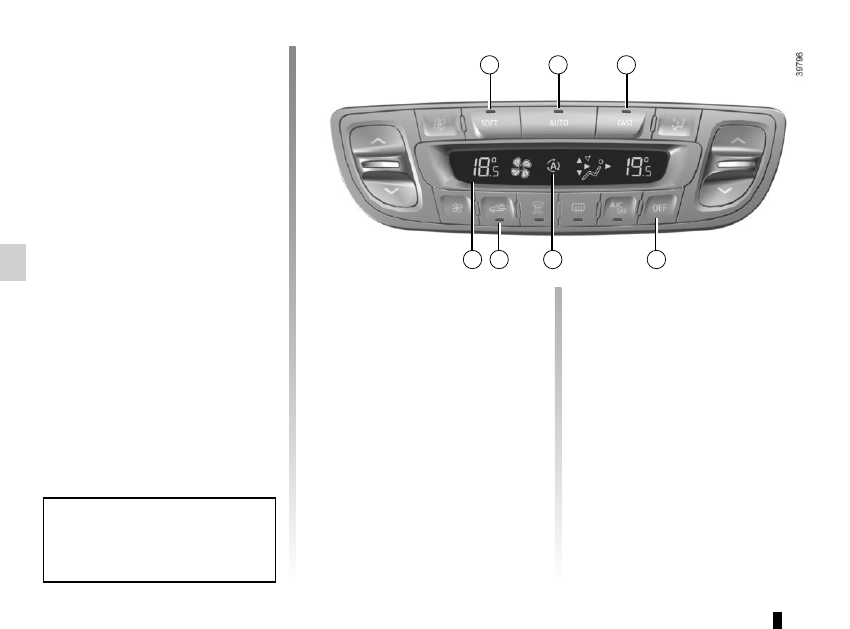Renault Megane Coupe (2016 year). Manual - part 10

3.10
Manual use
Pressing button 11 allows air recircula-
tion to be forced, in which case the in-
tegrated warning light comes on as well
as warning light 14.
Prolonged use of this position may lead
to odours, caused by non-renewal of
air, and the formation of condensation
on the windows.
We therefore advise you to return to au-
tomatic mode as soon as the air recir-
culation function is no longer required,
by pressing button 11 again.
Stopping the system
Press the button 7 to switch off the
system; in this case “OFF” is shown on
the display 12. To switch the system on,
press one of switches 2, 3 or 4.
Recycling
This function is managed automati-
cally (operation is confirmed by warn-
ing light 14 on display 12), but you can
also activate it manually.
Note:
– during recirculation, air is taken from
the passenger compartment and
is recycled, with no air being taken
from outside the vehicle;
– air recirculation allows the external
atmosphere to be cut off (when dri-
ving in polluted areas, etc.);
– lowering the passenger compart-
ment temperature as quickly as pos-
sible.
AUTOMATIC CLIMATE CONTROL
(5/5)
The demisting/de-icing will still take
priority over the air recirculation.
2
3
4
7
11
12
14